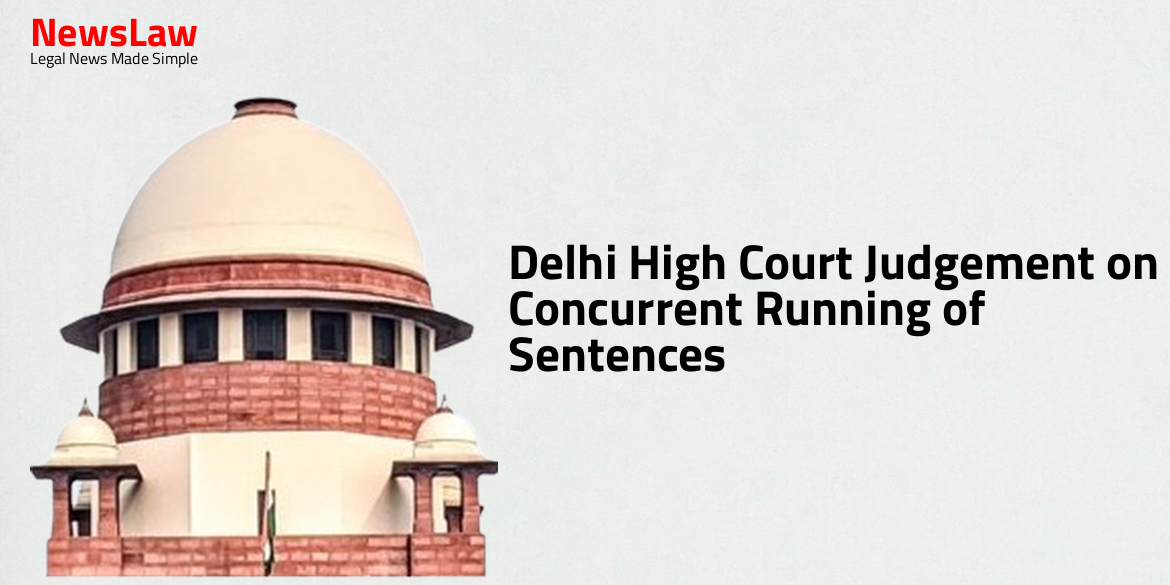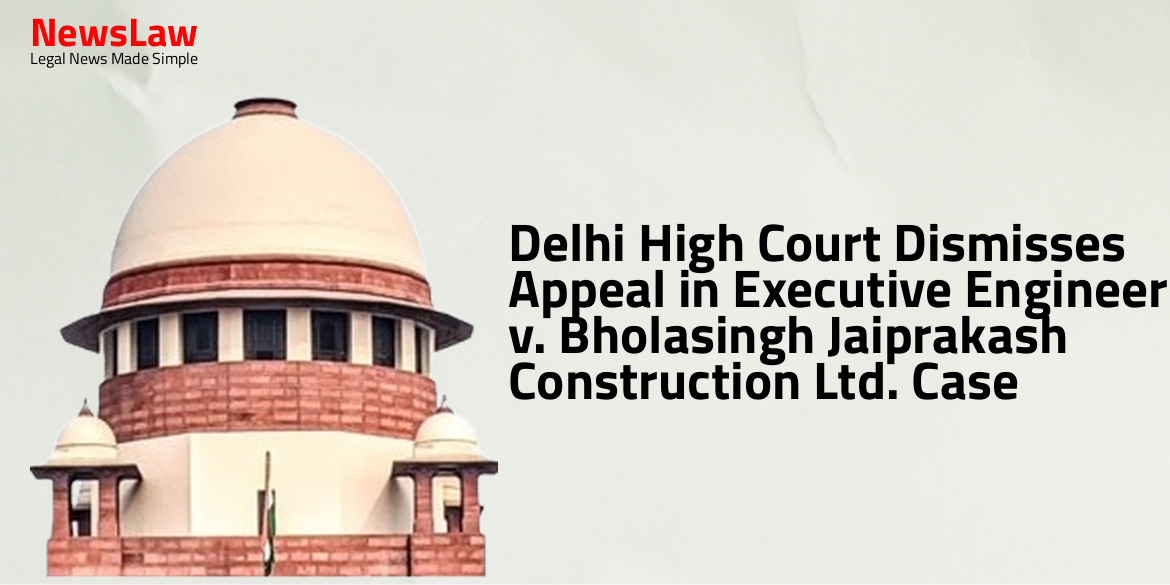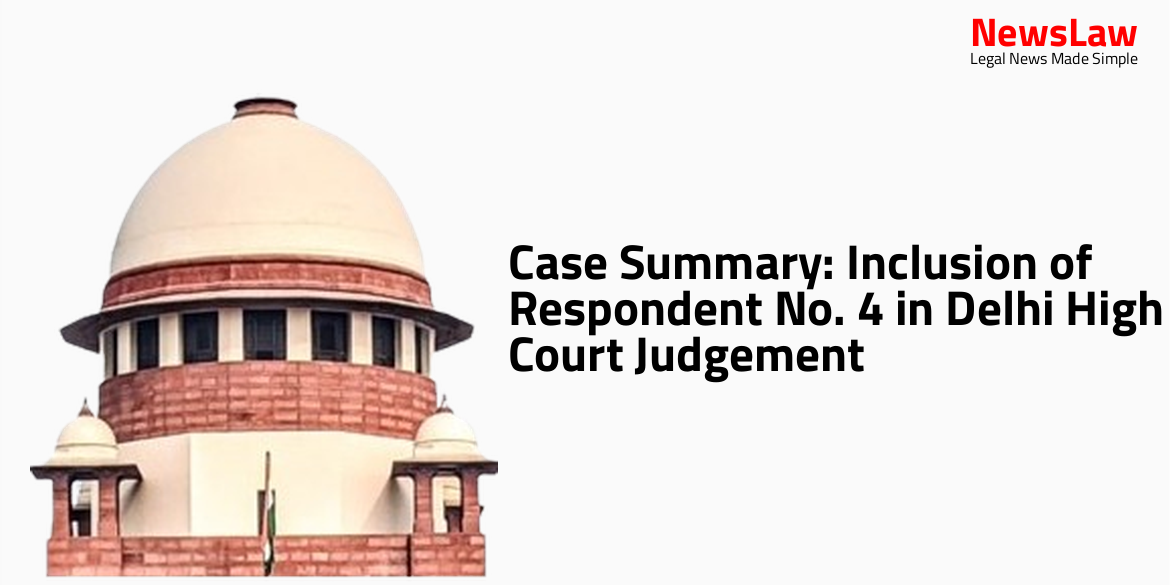In a recent judgement by the Delhi High Court, a decision on concurrent running of sentences was made in a legal case. The court addressed the plea for considering sentences consecutively and evaluated the totality of sentences. The petitioner argued for leniency based on various grounds, including voluntary guilt plea and intentions to reform. The respondent, NIA, was issued notice to file a reply opposing the relief sought by the petitioner. Stay tuned to understand the implications of this ruling on sentencing and judicial discretion.
Facts
- The sentences for the petitioner in each trial were to run concurrently as per Section 31 of Cr.P.C.
- The maximum sentence the petitioner had to undergo was eight years in one case and seven years in another.
- Concurrent running of sentences would mean a total of eight years in prison, while consecutive running would result in fifteen years.
- Maximum sentence for UAPA offences is imprisonment for life, but the actual sentence in this case was seven years.
- The petitioner was convicted for offenses under Sections 17/18/20 of UAPA and Section 120B of IPC.
- For instance, under Section 18 of UAPA, the maximum prescribed sentence is imprisonment for life, but the petitioner received the minimum sentence in one trial and seven years in another.
- The petitioner was also convicted in a separate trial for offenses under Section 120B of IPC and Sections 18/20/38/39 of UAPA.
- The petitioner was involved in a criminal conspiracy with ISIS handlers to promote jihadist activities.
- He facilitated co-accused Rizwan Ahmed with prepaid SIM cards for ISIS operations.
- The petitioner planned the assassination of Kamlesh Tiwari, a leader of Hind Mahasabha.
- He persuaded two youths to join ISIS and took them to Chennai.
- The ATS Branch of Mumbai Police initially registered the case against Aiyaz Md. Sultan and others for instigating youths to join ISIS.
- The accused used social media platforms to disseminate propaganda for ISIS recruitment.
- The petitioner instructed associates to collect powder from matchsticks for bomb-making training.
- He was arrested for his involvement in planning an attack during the Ardh Kumbh Mela in Haridwar.
Arguments
- Petitioner’s argument is to exercise judicial discretion under Section 427(1) of Cr.P.C. for concurrent running of separate sentences.
- Petitioner pleads for sentences to be considered consecutively and for the totality of sentences to be evaluated.
- Plea for leniency based on jail conduct report showing inclination towards reformation and positive intentions.
- Counsel referenced case law to support the plea for concurrent running of sentences.
- Plea for considering petitioner’s plea of guilt, young age, poor background, and desire to reform when exercising discretion under Section 427(1) of Cr.P.C.
- Emphasis on petitioner’s voluntary guilty plea during trial as a factor for leniency.
- Plea to exercise inherent and extra-ordinary jurisdiction of the Court to order concurrent running of sentences.
- Petitioner highlights lack of communication between Trial Courts as reason for seeking Court’s intervention.
- Notice issued to respondent NIA to file a reply opposing the relief requested by the petitioner.
- The petitioner has already been awarded lesser sentences by both Trial Courts.
- Consecutive running of sentences will not cause prejudice to the petitioner.
- Pleading guilty resulted in not receiving maximum sentence of life imprisonment.
- Benefit of pleading guilty has already been extended to the petitioner by the Trial Courts.
Analysis
- The principle of totality in sentencing was explained by the Hon‟ble Apex Court in the case of Mohd. Akhtar Hussain.
- The sentencing judge should ensure that the totality of the sentences is correct considering all circumstances of the case.
- There is no straight jacket formula for concurrency of sentences under Section 427(1) of Cr.P.C.
- The court can decide on concurrency based on the specific facts and circumstances of the case.
- Concurrent sentences may be proper and legitimate in some cases.
- Concurrent sentences are not applicable if the offenses are based on different transactions or have different facts.
- Persons dealing in narcotic drugs have a deadly impact on society and cause harm to innocent victims.
- The discretion under Section 427(1) of Cr.P.C. should be exercised judiciously based on the nature of the offense and facts of the situation.
- Section 427 of Cr.P.C. addresses situations where a person already serving a sentence of imprisonment is sentenced in a subsequent case.
- The subsequent imprisonment will either commence after the completion of the previous sentence, unless directed otherwise by the Court, or run concurrently with it.
- If a person serving a life sentence is sentenced again, the subsequent sentence will run concurrently with the previous life sentence.
- The essence of Section 427(1) is to manage the sequential imposition of sentences for multiple offenses.
- The discretion under Section 427 of Cr.PC to run subsequent sentence concurrently with the previous sentence must be exercised judiciously based on the offences committed.
- The petitioner was convicted for conspiracy to carry out attacks during the Ardh Kumbh Mela and promoting ISIS activities, including planning an assassination.
- The gravity of the offences and their impact on society must be considered while determining the sentences.
- Terrorism poses a threat to national security and societal harmony by instilling fear and targeting innocent civilians.
- The discretion under Section 427 of Cr.PC should not favor those indulging in illegal activities like narcotic drug trafficking.
- The totality of sentences awarded should be considered, and the maximum sentence was not awarded in either case against the petitioner.
- Consecutive sentences totaling fifteen years were imposed, not the maximum penalty of life imprisonment.
- The offences in the two cases were distinct, involving different acts by the petitioner with varying co-accused individuals.
- Lenient views were taken by the Trial Courts despite the serious nature of crimes like recruiting youth for radicalization and planning terrorist activities.
- Considering the seriousness of NDPS Act offences, no leniency should be granted in such cases.
- The petitioner’s pleaded guilty to UAPA charges related to planning terrorist attacks to disrupt communal harmony.
- The courts had already shown leniency in sentencing; thus, concurrent running of sentences was not justified.
- Citing a case where concurrent sentences were not allowed, even though the petitioner was convicted in different cases under similar provisions.
- The Hon’ble Supreme Court’s observation on cases under NDPS Act underlines the need for sternness in such cases.
- Further leniency through concurrent running of sentences is unwarranted after lenient sentencing by the Trial Courts.
- The offences committed by the petitioner are grave and serious under the Unlawful Activities (Prevention) Act, 1967.
- The offences have a significant impact on society, national security, and communal harmony.
- The two cases in which the petitioner was convicted are not part of the same transaction.
- The Trial Courts did not give the maximum sentence of life imprisonment to the petitioner, showing a lenient approach.
Decision
- The judgment will be uploaded on the website without delay.
- The sentence of imprisonment given to the petitioner in the case from Delhi will start after the imprisonment in the Mumbai case is completed.
- The Court will not exercise discretion under Section 427(1) of Cr.P.C.
- The present petition and the pending application are dismissed.
Case Title: MOHSIN IBRAHIM SAYYED Vs. NATIONAL INVESTIGATION AGENCY (2024:DHC:4734)
Case Number: W.P.(CRL)-463/2023



